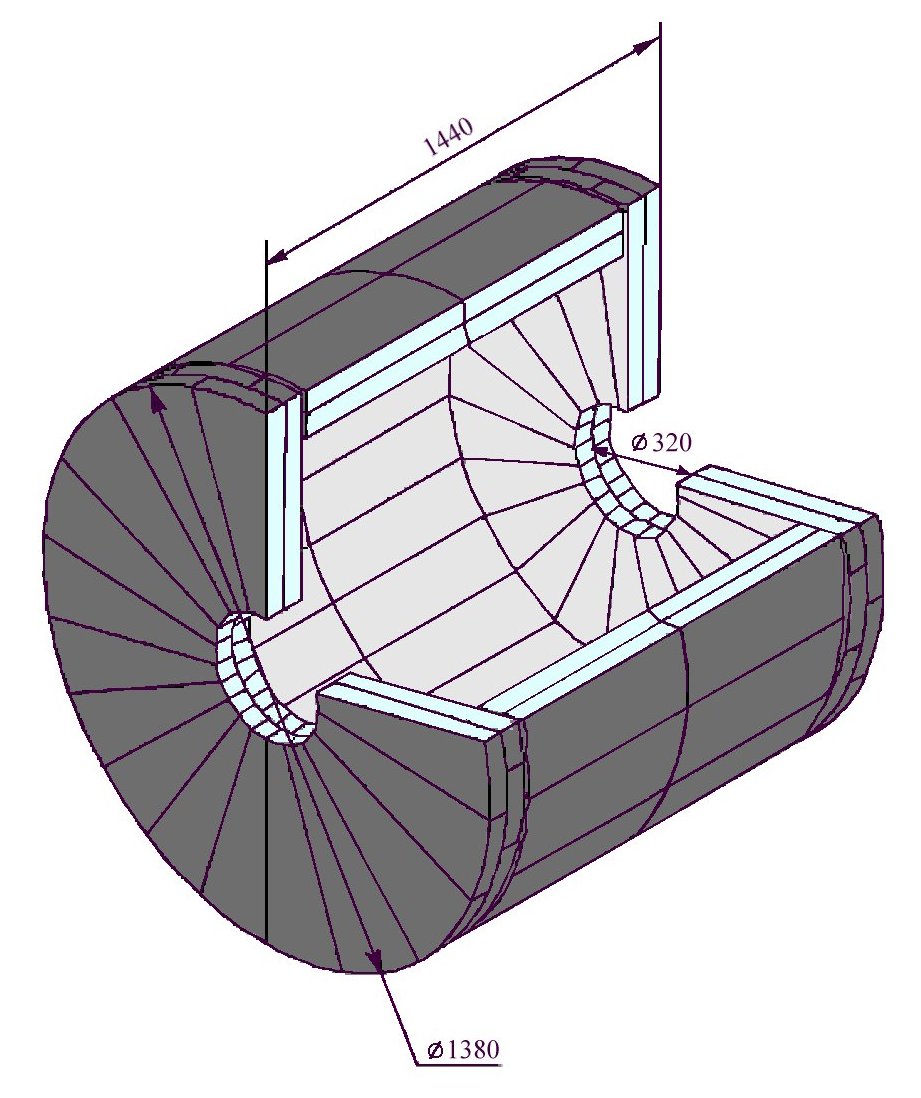
|
For the Cherenkov light collection reemitters of light (Wave Length
Shifters) are used. This gives a possibility to diminish number of
photomultipliers in the system and to enlarge size of the counters.
Advatage of this method of light collection in comparison with the direct
one is due to much better optical properties of light shifter compared to
aerogel.
The system consists of barrel and end cap parts. The counters are arranged
in two layers, rotated in phi on half of period with respect to each
other (Fig.2).
The sizes of counters and their position are chosen in such a way
that a particle from the interaction point hits shifter in only one layer
Large fraction of particles cross aerogel in both layers. These particles
can be identified much better. The system is segmented in 20 sectors in p
Total number of counters equals 160.
In Fig.3 and
Fig.4
views of barrel and end-cap parts of the systems are shown.
|
![]()

![]()
![]()
![]()
![]()
![]()
![]()

![]()
![]()
![]()
![]()
![]()